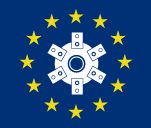EU-compound feed production in decline

In 2006, the compound feed production for the EU-25 reached 143.2 million tonnes (mt), which is 0.2% below the figure for 2005 (143.5 mt). The ten new EU member states account for around 16.0 mt.
The figure includes an estimated amount of 1.5 mt, being the production for
Malta, Luxembourg and Greece.
As expected, the poultry feed production
was affected in the first half 2006 by the severe drop in poultry consumption
due to consumer concerns regarding the Avian Influenza
outbreak.
Strong drop in poultry feed
The consequences in terms
of total compound feed volumes remained however relatively limited on a yearly
basis (-4%), thanks to effective risk management efforts by authorities and
operators of the poultry chain.
Mediterranean countries registered the
most important decreases with -6% for France, -8% for Italy and -9% for Spain.
Among the top poultry feed producing countries, Poland is the only one showing a
positive development with almost 7% production increase and this for the second
year in a row.
Cattle feed on the rise
The demand for cattle
feed increased slightly (+1%) with very contrasting developments: after three
years of serious drought, the agronomic conditions improved considerably in 2006
in the Iberian Peninsula. This resulted in a better roughage harvest and,
therefore, in a lower demand for compound feed which decreased in Spain and
Portugal by resp. 13 and 17%.
In most other countries, the situation was
quite the reverse, with a growth between 2% for The Netherlands up to 17% for
Ireland and even 20% for Poland.
Pig feed popular again
After
several consecutive years of decrease anticipated by experts, the pig production
in the 10 new EU member states began to recover, explaining the +7% in pig feed
production mostly due to Poland.
The situation is similar in The
Netherlands also showing a clear growth in pig feed production in 2006 (+4%),
after almost 10 years of steady decrease. On the other hand, pig feed production
in Spain decreased by 0.3%, mostly due to lighter carcass
weights.
France largest producer
All species combined, France
is the first compound feed producing country, ahead of Germany, which recovered
its second place from Spain. The Spanish feed industry lost almost 1 mt in 2006
after a spectacular development over the last ten years.
Over the same
period, the Dutch feed industry went into the opposite direction with almost 4
mt lost between 1993 and 2003, mostly pig feed, but has stabilised since
then.
Germany is the leading cattle feed producer, Spain is now the
leader for pig feed and France clearly breaks away from the other countries for
poultry feed production.
Outlook for 2007
The key question for
2007 is how the present development of the demand for cereals and oilseeds for
biofuel production can affect the livestock sector and the overall EU feed
balance sheet.
According to Fefac experts, competition for land has
started between grain for biofuel production and roughages for cattle in certain
countries such as Germany, which may impact on the demand for compound
feed.
Likewise, the spectacular increase in cereal prices in the EU may
also encourage farmers to put their cereals on the market and purchase compound
feed. This explains why Fefac experts consider that, although roughage resources
for 2006-07 should be much better than in the past years, especially in the
Iberian Peninsula, the demand for cattle feed should remain stable in
2007.
Pig feed production is expected to stabilise as well: the expected
slight development in pork production should indeed be offset by better
zootechnical management, in particular better feed conversion rates.
On
the poultry side, the Fefac experts anticipate some recovery in poultry feed in
particular in Italy, hence a +1% forecast for the EU-25. This would lead to a
production of almost the same level as for 2006. The two new EU Member States,
Romania and Bulgaria, produce together app. 2.5 mt of compound feed.











